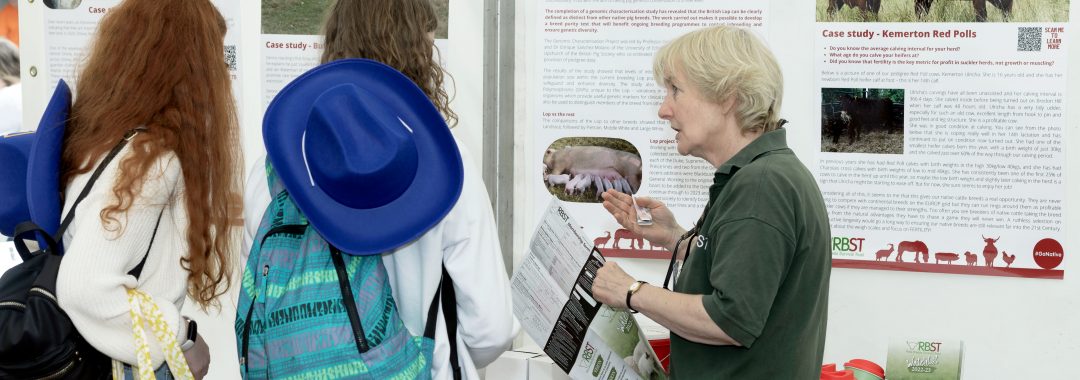RBST Scotland will once again be at the Royal Highland Show, which this year will be running from the 20th to the 23rd of June at the Ingliston Showground. More information on the Show can be found here.
We will be in the same pitch as last year, at the bottom of the Sheep Lines and opposite the Highland Hall. Hope that you can drop in and see us.
This year the marquee will feature a number of seminars and discussions on Thursday and Friday as we continue to bring our message to farmers, smallholders and crofters about the benefits of rare and native breeds:
Native Breeds of livestock have key advantages:
Lower inputs – native breeds are perfectly adapted to their environment and do not require costly supplementary feeding which often is full of imported feedstuffs, or from cereals using land that could be used to feed the human population.
Grass Fed – native breeds of cattle and sheep in particular are perfectly adapted to a grass and forage fed diet. Grass is an outstanding fixer of Carbon, and meat from grass fed livestock can be carbon positive.
Natural immunity – many breeds have inherited immunity to illnesses or physical problems
Outdoor living – again natives are perfectly adapted to their environment and can live outdoors all year round, reducing costs and living a natural life. They offer a balance to more intensive forms of farming.
Better taste – native breeds are like fine wines – the terroir of where they live comes out in the taste. In a world of homogenous tasting food, variety can be supplied by different breeds.
Live longer and be more productive – with females often producing young well beyond the reproductive life of continental breeds, and crucially not requiring high levels of natal intervention which has been seen to reduce fertility.
Heritage – native breeds are often associated with a region or place – they tell a story which enhances the experience for the consumer – in the Scottish year of Storytelling we have an opportunity to tell some of those tales and explain the heritage.
Local supply – Often native breeds are kept in lower density environments by smaller land owners who supply directly through local markets. This method of supply offers a real alternative for consumers who value provenance and shorter supply chains.
Biodiversity – native breeds are a crucial part of our agricultural biodiversity – they evolved to be here and are part of the natural environment. They do a job that nothing else can do as well – as an example the Highland Pony is perfectly suited to life in harsher environments, and its role as a conservation grazer delivers real benefits to flora and fauna.
Soil protection and enhancement – the UK’s agricultural history was based on mixed farming, where native breeds played a part in a regular rotation, enhancing the soil, breaking up the sward to allow wild plants to flourish, and being part of the natural cycle – dung provide habitat for beetles that provide food for birds and other wildlife, starting the chain of life that we have known for centuries but are in danger of losing.
Food Security –Native breeds turn otherwise unproductive land into high quality animal protein. 40% of our land is not suitable for crop production, but it is eminently suitable for native livestock.
